AI technology is not eliminating collaborative platforms; rather, it is making truly collaborative platforms more scarce and valuable.
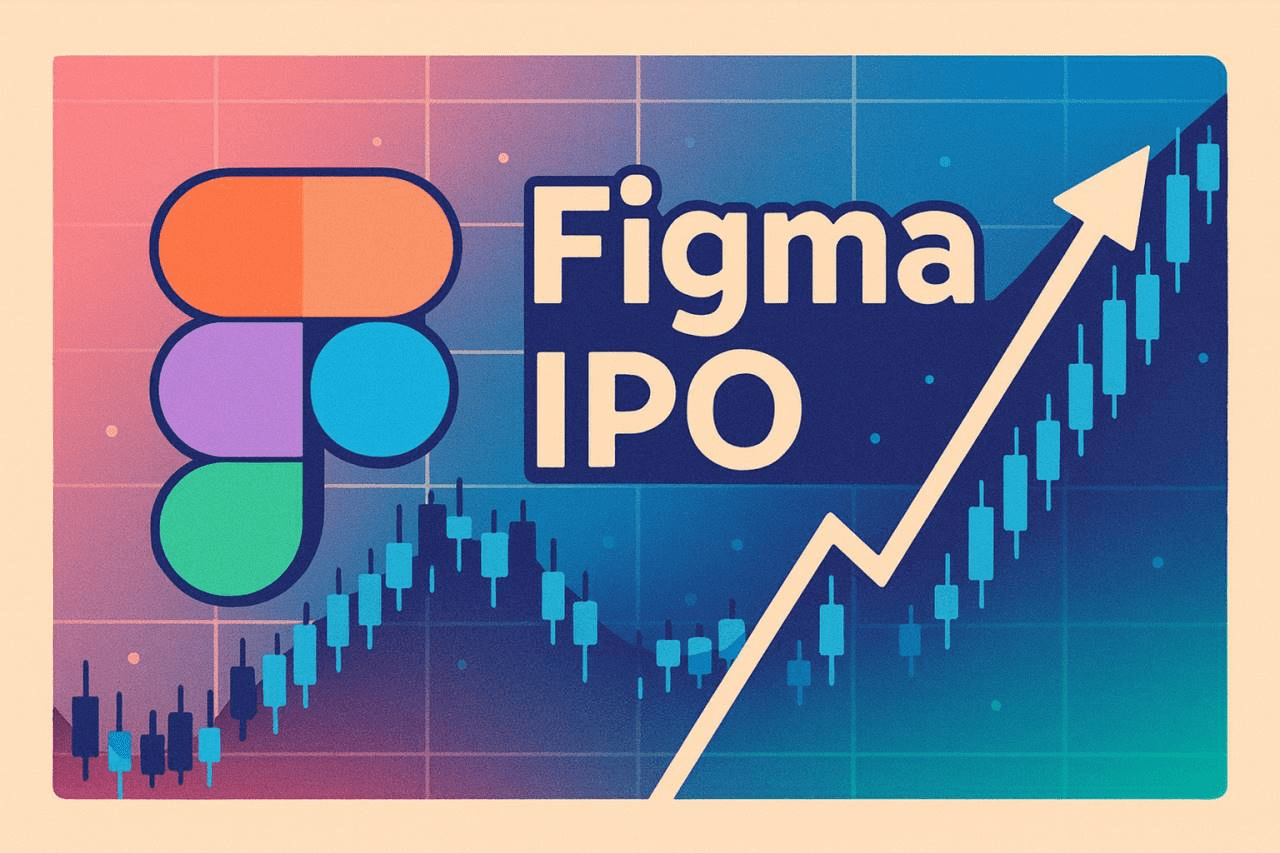
Have you ever wondered why, in an era where AI can generate everything, a 'drawing tool' has become more valuable? On July 31, Figma officially landed on the New York Stock Exchange, closing on its first day with a market value of $56.3 billion and a P/S ratio exceeding 60 times. In comparison, the average P/S ratio in the SaaS industry is only 7 times. This figure not only far surpasses the valuation levels of established SaaS companies like Adobe and Salesforce but even exceeds the $20 billion offer Adobe attempted to acquire it for two years ago, which is quite astounding. What's more thought-provoking is that this valuation was given against the backdrop of the explosion of AI design tools, ChatGPT being able to quickly produce design drafts, and Midjourney generating exquisite images. According to conventional logic, as AI automates design work, the value of traditional design tools should diminish, yet the reality is quite the opposite.

Why are investors willing to pay such high valuations for a collaborative design platform? What does this reflect about future judgments? When I delved into Figma's IPO prospectus, analyzing its over $900 million annual recurring revenue, 46% annual growth rate, and 132% net revenue retention rate—these impressive figures—I discovered a disruptive realization: AI technology is not eliminating collaborative platforms; rather, it is making truly collaborative platforms more scarce and valuable. This scarcity is redefining the value logic of the entire software industry and provides a new perspective for understanding the global technology investment landscape. In this process of redefinition, some high-quality targets with significant strategic value are awaiting rediscovery.
A stunning statistic behind the commercial secret: non-designer users account for two-thirds
The most disruptive aspect of Figma is not its revenue or functionality, but its user composition: two-thirds of its 13 million users are not professional designers. Behind this is a profound shift in enterprise collaboration methods—from a process centered on job roles to a system centered on collaboration. Figma is no longer just a design tool, but a cross-functional collaboration platform. In the AI era, enterprises are willing to pay for tools that 'enhance collaboration' rather than 'enable individual work'.
Let me first share a shocking statistic: two-thirds of Figma's 13 million monthly active users are not designers. This means product managers, developers, marketers, operations specialists, and even CEOs are using this software originally defined as a 'design tool'. If you think this is just a natural extension of the user base, you are gravely mistaken. This statistic hides a fundamental transformation in modern enterprise working methods and a paradigm shift awaiting the software industry.
In traditional enterprise workflows, design is a relatively isolated professional field. Designers create in their specialized software, submit files to product managers for review, pass them to developers for implementation, and finally have operations personnel promote them. This linear, segmented workflow was effective in the early days of the internet because the complexity of products was relatively low and iteration speeds were slow. However, in today’s era where product lifecycles are measured in weeks or even days, this working method has become a huge obstacle to efficiency.
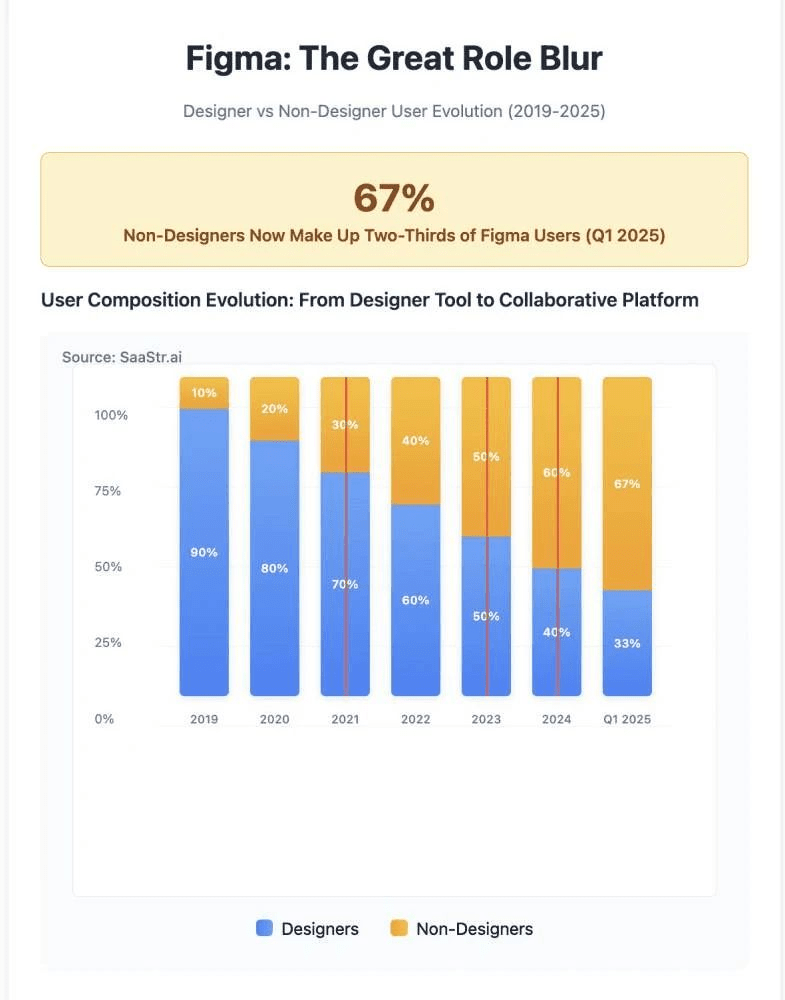
According to Deloitte's research, 57% of business leaders predict that AI will 'substantially change' their companies in the next three years, but this change is not simply a replacement relationship. The changes in Figma's user composition reflect enterprises' urgent need for real-time collaboration and cross-functional cooperation. When product managers can annotate requirements directly on design files, developers can view design specifications in real time, and operations personnel can quickly create marketing materials, the efficiency of the entire product development process experiences a qualitative leap. More importantly, this collaborative approach eliminates losses and misunderstandings in the information transmission process, bringing the final product closer to the original design intent.
I found that the change in Figma's user composition actually signals a larger trend: software boundaries are disappearing. In the past, we were accustomed to classifying software by function: design software, development tools, project management software, communication and collaboration software, etc. However, with the development of AI technology, these boundaries have become increasingly blurred. An excellent collaborative platform is no longer just about providing specific functions; it has become the infrastructure that supports the entire workflow. The value of this infrastructure far exceeds the simple sum of traditional functional software.
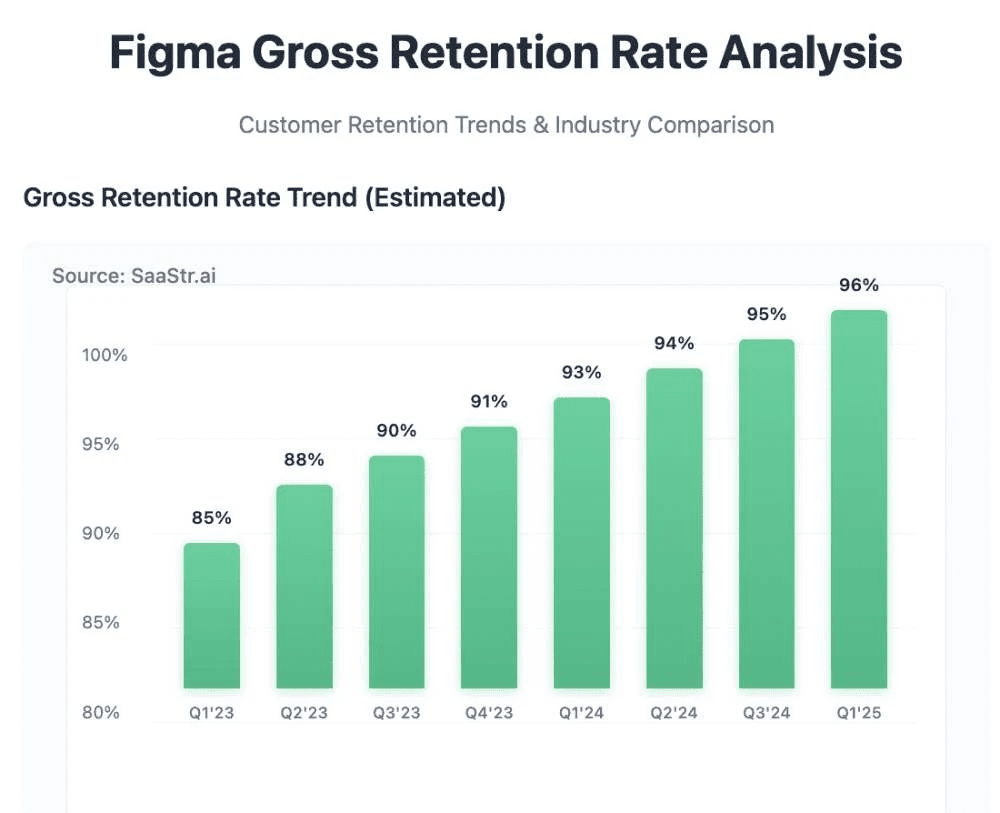
From a business model perspective, this change in user composition has led to a fundamental optimization of the revenue structure. Enterprises' payments are essentially for management and collaboration, not just for tools for designer roles. Traditional design software primarily relies on payments from designers, which has a clear ceiling. However, when two-thirds of users are non-designers, the platform's scalability becomes almost unlimited. Each enterprise may have only a few designers, but the number of product managers, developers, and operations personnel can be several times or even tens of times that of designers. This change in user structure brings exponential revenue growth potential to the platform and explains why investors are willing to give Figma such a high valuation premium.
The Counterintuitive Phenomenon of the AI Era: Exponential Growth in Collaboration Demand
Many believe that AI can weaken collaboration demand, but the reality is counterintuitive: AI enhances information complexity, compresses decision cycles, and introduces more non-design roles into the mix. Design is no longer about 'creating one version' but rather 'real-time debugging of multiple versions'; Figma ensures brand consistency through its design system and has become the decision-making hub for intelligent collaboration. Collaboration does not descend into lower dimensions; instead, it upgrades to become one of the foundations of AI systems.
When I delved deeper into Figma's strategic layout and user behavior changes in the wave of AI, I discovered an extremely counterintuitive yet logical phenomenon: the development of AI technology has not diminished the value of collaborative platforms; instead, it has strengthened their strategic positions in an unprecedented way. The logic behind this phenomenon reveals a fundamental cognitive bias in our understanding of AI's impact and provides important clues for judging the future direction of the software industry.
The traditional view holds that when AI can automatically generate design drafts, write code, and create charts, the corresponding professional software and collaboration tools will lose value. This view's logic seems reasonable: if AI can directly produce results, why do we need complex tools and cumbersome collaboration processes? However, Figma's actual data completely overturns this expectation. In 2024, Figma launched 180 new feature updates, the majority of which are related to AI capabilities, including automatic layout optimization, intelligent component recommendations, design specification checks, and more. The introduction of these AI features has not reduced users' collaboration frequency; rather, it has significantly boosted team collaboration activity.
The key lies in our understanding of the essence of 'design work'. Design has never been simply about 'generating graphics' or 'creating visuals'; rather, it is a complex problem-solving process that includes demand understanding, user insights, strategy formulation, solution exploration, feedback integration, and iterative optimization across multiple stages. AI can indeed provide powerful support in the 'solution generation' stage, allowing designers to quickly explore more possibilities, but this paradoxically makes the other stages even more important and complex. When AI can generate 10 design proposals, how do teams discuss the pros and cons of these proposals? How do we incorporate user feedback and business objectives to choose the best option? How do we ensure that the selected proposal can be implemented and deployed correctly? These questions require stronger collaborative mechanisms to solve.
AI technology has also compressed the timeline of design work. In traditional models, a design project might take several weeks to complete, allowing ample time for gradual communication and adjustments. However, when AI can quickly generate design proposals, the project timeline is greatly compressed, requiring teams to possess higher real-time collaboration capabilities. Asynchronous email communication and periodic meeting reviews can no longer meet this fast-paced work model, necessitating real-time collaboration, instant feedback, and rapid iteration mechanisms based on the platform.
At the same time, this compression of timelines also brings a deeper challenge: while AI enhances the efficiency of content generation across various tasks, we all know that AI’s biggest issue is error and inaccuracy. When multiple roles begin to use AI to rapidly produce content, ensuring brand consistency and design quality becomes a critical issue. This is precisely where the value of collaborative design platforms lies—Figma ensures that content generation across different roles does not fall apart through online collaboration and design systems, maintaining consistency in enterprise software, experiences, and branding.
Furthermore, the application of AI technology actually increases the complexity of design decision-making. This complexity requires teams to possess stronger collective intelligence and decision-making mechanisms, and collaborative platforms are precisely the carriers for this collective intelligence to function. The platform must not only accommodate the diverse content generated by AI but also provide effective evaluation, discussion, and decision-making tools to help teams make optimal choices among numerous options.
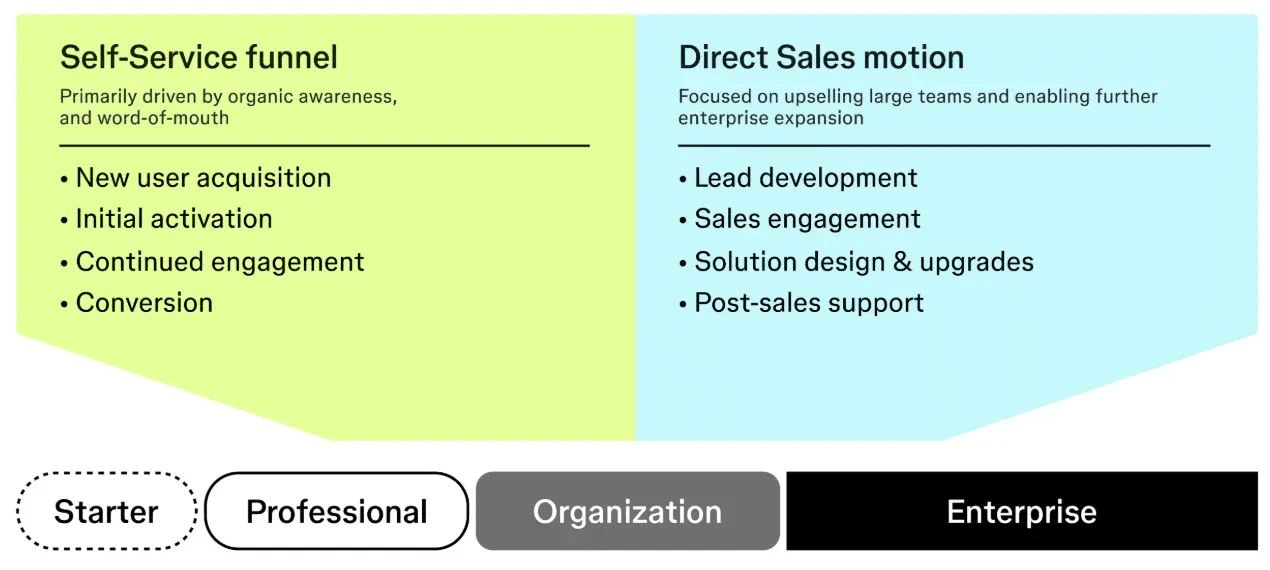
From a business perspective, the growth of AI-driven collaboration demand creates new revenue opportunities for platforms. The traditional SaaS model primarily charges based on user numbers and usage duration, but in an AI-enhanced collaborative model, platforms can price based on the complexity of collaboration, the workload processed by AI, and the value of intelligent services. This multi-dimensional value creation and value acquisition model brings greater commercial imagination space to collaborative platforms.
The new logic of the platform economy: from functional stacking to ecological synergy
76% of Figma users use multiple products, not for more functionality, but for stronger collaboration. AI allows data, processes, and permissions to cross multiple roles and scenarios; the deeper users flow within the ecosystem, the higher the migration costs. Clients paying over $100,000 annually surged by 47%, indicating that companies view Figma as a 'highly sticky collaborative platform' rather than a point tool. This is the new paradigm of the moat for platform companies.
In-depth research into Figma's evolution of business models reveals a key feature of the platform economy in the current era: the synergy of multiple products is becoming the core factor determining platform value, while traditional functional competition is gradually losing significance. This change not only redefines the product strategy of software companies but also provides us with new perspectives to understand the development rules of the platform economy.

Among Figma users, 76% use more than two products. This seemingly simple number hides profound changes in modern enterprise software consumption. In the traditional SaaS era, companies typically procured specialized software for each specific need: design needs were met with design software, project management with project management software, and communication and collaboration with instant messaging software. This 'point procurement' model was effective in an era of relatively independent functions, but in today's deep digital transformation, such segmented software usage has become the biggest obstacle to efficiency improvement. Issues like data silos, process disconnection, and inconsistent user experiences have led to significant hidden costs for enterprises.
Figma's multi-product strategy is effectively building a complete digital product lifecycle ecosystem. From initial idea discussions (FigJam) to concrete design execution (Figma Design), from development delivery (Dev Mode) to content marketing (Figma Buzz), from website creation (Figma Sites) to presentation reporting (Figma Slides), each product covers key stages in the digital product development process. More importantly, these products do not simply stack functions but form organic synergies: ideas generated in FigJam can directly translate into design elements in Figma Design, components in Design can automatically generate code specifications in Dev Mode, and design assets can seamlessly apply to slides in Presentations.
The value of product synergy is further amplified in the current context. AI technology has made data flow and intelligent processing between different products smoother, allowing user behavior and preferences in one product to be learned by AI and applied to optimize experiences in other products. For instance, color combinations and font pairings frequently used by users in Figma Design can be recognized by AI and automatically applied to FigJam's template recommendations; code preferences in Dev Mode can influence AI's layout suggestions in Design; and presentation styles in Slides can guide AI in content generation in other products. This cross-product AI collaboration creates user experiences that traditional tools cannot achieve.
From the perspective of user stickiness, the migration costs arising from multi-product usage grow exponentially. When users employ multiple interconnected products simultaneously, the migration costs not only include the individual costs of each product but also the systemic costs of re-establishing collaborative relationships between products. More importantly, the 'soft assets' accumulated in a multi-product ecosystem—such as workflows, collaboration habits, and data associations—are often more difficult to migrate than specific files and settings, constituting the strongest moat for the platform.
I noticed that the number of Figma's large clients paying over $100,000 annually increased by 47%, reaching 1,031, and these clients contributed 37% of the total revenue. This concentration of revenue reflects the Matthew effect of platform value: the larger the organization, the more complex the cross-departmental collaboration needs, and the more value they can derive from multi-product synergy, making them more willing to pay higher fees for that value. Large organizations typically have dedicated design, product, development, and operations teams, and the efficiency of collaboration between these teams directly affects the enterprise's competitiveness, thus enhancing their perception of value and willingness to pay for collaboration platforms.
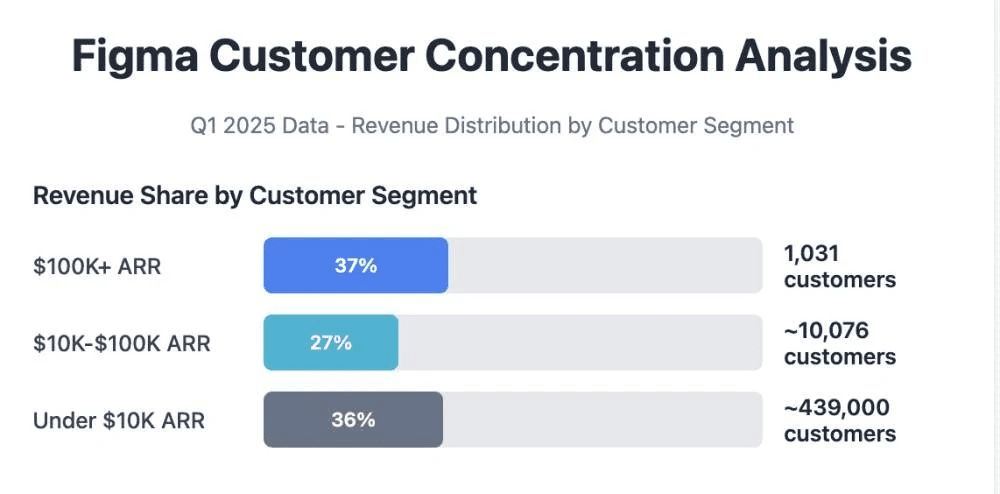
The deeper commercial logic lies in the fact that multi-product platforms have changed the competitive dimensions of the software industry. In the platform era, the core of competition has shifted to the integrity of the ecosystem and the efficiency of collaboration. Users no longer only care about the strengths and weaknesses of product functions; they care more about whether the entire platform can support a complete workflow, provide a consistent user experience, and achieve seamless data and process connectivity.
From global software market development trends, I predict that the future enterprise software market will be primarily dominated by such multi-product collaborative platforms. This trend poses new strategic choices for all software companies: either develop into a platform, become part of a platform ecosystem, or face the risk of being eliminated from the market.
The unique opportunity of the Chinese market: the rediscovery of strategic value
China has a relatively large designer population and an active digital economy, creating unique opportunities for local collaborative platforms. MasterGo, as the only platform in China that benchmarks against Figma, possesses technical strength, recognition from leading clients, localization advantages, and policy dividends. In AI layout, it even acted earlier than Figma, representing an important strategic value target.
When I shifted my analytical perspective from Figma to the global software market landscape, I discovered an extremely interesting and opportunity-filled phenomenon: although the U.S. has produced collaborative design platform benchmarks like Figma, the uniqueness and complexity of the Chinese market create a massive and relatively independent value pit for local innovation. This pit exists not only in market demand but also manifests in technological development paths, business model innovation, and ecosystem construction across multiple dimensions. In this value pit, a high-quality target with significant strategic value is waiting to be rediscovered.
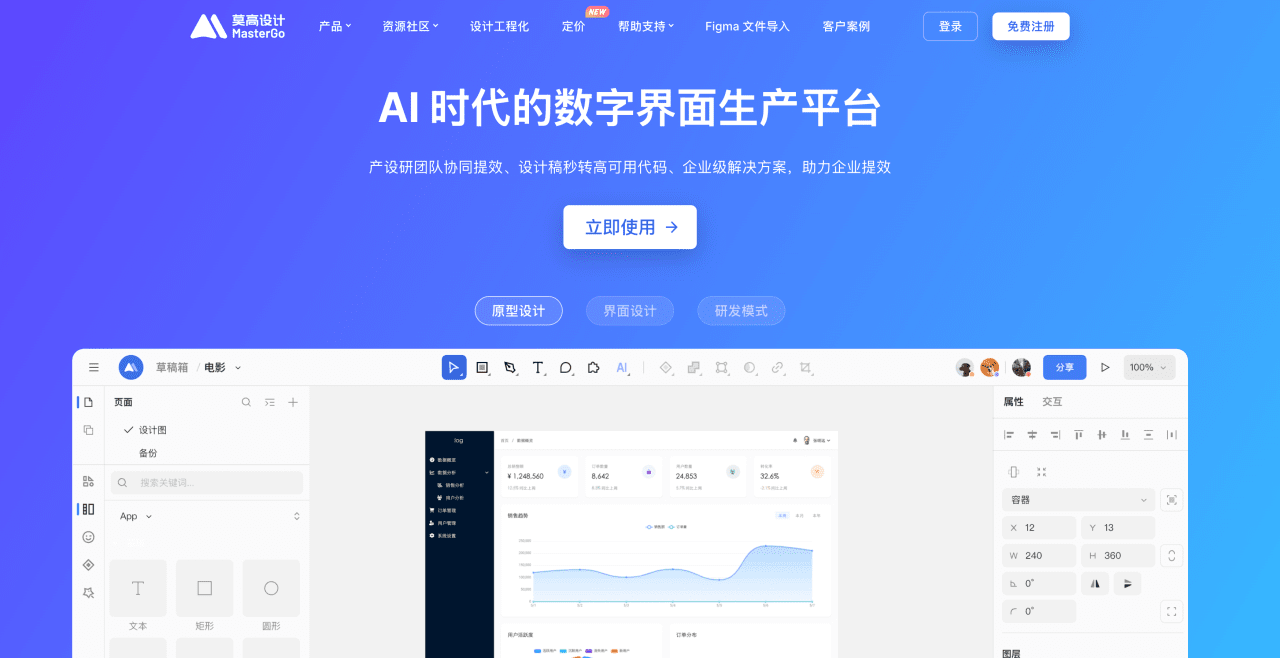
The uniqueness of the Chinese design software market is primarily reflected in its scale effect. China has a relatively large designer population and an active digital economy ecosystem. From e-commerce platform product page design to the HMI design in the new energy industry, to the digital systems built by enterprises, the design demands in the Chinese market are leading globally in terms of quantity, variety, complexity, and iteration speed. This market environment provides collaborative design tools with rich application scenarios and rapid growth soil, and also places higher demands on the tools' performance, stability, and adaptability.
In such a market environment, MasterGo, as the only collaborative design platform in China that can compete with Figma, demonstrates remarkable development potential. From a technical architecture perspective, MasterGo also adopts a web-native collaborative design architecture, supporting core functions such as real-time editing by multiple users, version management, and design systems. After years of technological accumulation and product refinement, MasterGo can now stably support large-scale team collaboration with hundreds of people online simultaneously, with individual projects supporting editing at the level of tens of thousands of layers, achieving international advanced levels of performance and stability. More importantly, MasterGo also has privatization deployment capabilities, providing ideal solutions for clients with high security requirements, such as finance, government, and enterprises.
Deeper opportunities arise from cultural and working method differences. The organizational culture of Chinese enterprises places greater emphasis on collective decision-making and cross-departmental collaboration, which creates unique demands for collaborative design tools. For example, Chinese enterprises are more accustomed to refining design proposals through group discussions, placing more importance on real-time communication and rapid feedback during the design process, and requiring design tools to support simultaneous online collaboration for large teams. Moreover, decision-making speed in Chinese enterprises is generally faster, and product iteration cycles are shorter, which requires design tools to support high-frequency version updates and rapid design changes. These demand characteristics differ significantly from overseas markets, and MasterGo has established strong product advantages in these areas.
From market performance, MasterGo has already gained high recognition from leading clients. Through the 'co-creation plan', MasterGo has deeply bound itself with top enterprise clients such as China Telecom, China Merchants Bank, Meituan, Baidu, and iFlytek. In just three years, it achieved nearly 80% market share, with over a hundred top enterprises paying for its services. Establishing this client base not only brings stable revenue sources but, more importantly, builds a strong word-of-mouth effect and industry influence. MasterGo's NPS (Net Promoter Score) exceeds 50%, and 63% of users believe its experience ranks first, a level of user satisfaction that is very rare in the enterprise software field.
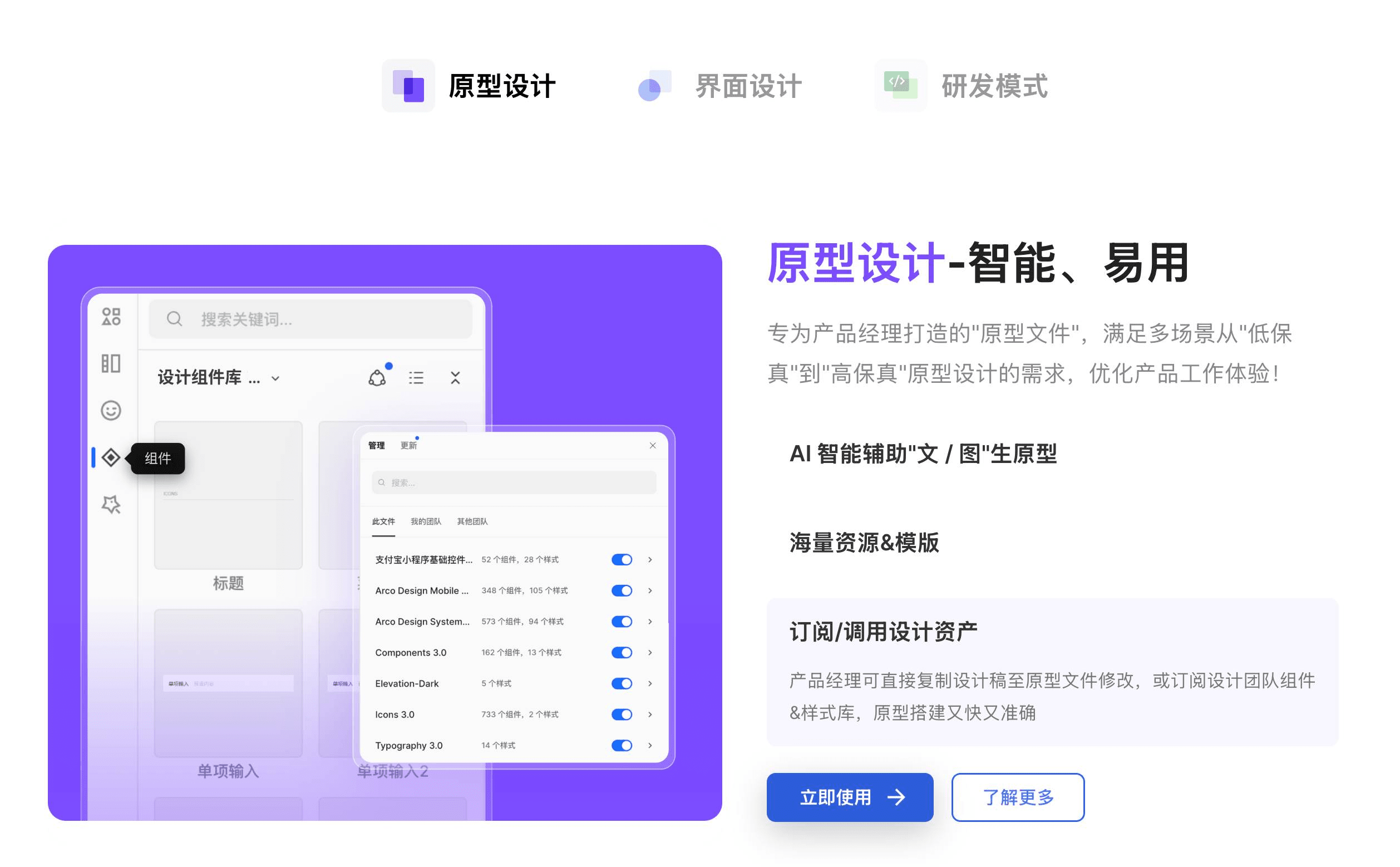
From the perspective of payment capability and commercialization potential, the Chinese market demonstrates enormous value creation space. I noticed an interesting statistic regarding Figma: although international users account for 85% of its total users, international revenue only accounts for 53% of total revenue. This mismatch between users and revenue reflects differences in payment capabilities, payment habits, and value perceptions across different markets. Chinese enterprises generally have a strong willingness to pay and high price tolerance for tools that can significantly enhance efficiency and competitiveness. Especially in first-tier cities and leading enterprises, investing in professional design tools has become standard configuration for digital transformation. This provides a solid market foundation for MasterGo's commercialization.
Changes in the policy environment have created unprecedented development opportunities for domestic software. The implementation of regulations such as the Data Security Law and Cybersecurity Law has shifted enterprises' requirements for software autonomy and controllability from 'optional' to 'mandatory'. Particularly among key client groups such as government agencies, financial institutions, and large state-owned enterprises, using software with independent intellectual property rights has become a compliance requirement. Figma once faced supply risks with Chinese enterprises like DJI, which made many enterprises realize the importance of having autonomous and controllable design tools. As a representative of domestic collaborative design software, MasterGo not only fills this gap but also addresses enterprises' core concerns regarding data security and business continuity.
The more strategically significant opportunity lies in the deep integration of AI technology with local demands. In the layout of AI capabilities, MasterGo has shown impressive foresight and execution capability. According to public information, MasterGo has acted quite swiftly in the AI wave, launching the AI Coding Agent feature for generating website code even earlier than Figma and is one of the first software platforms globally to announce support for and expand MCP (Model Context Protocol). This proactive attitude and rapid execution ability in applying AI technology reflect the team's deep understanding of technological trends and keen insight into product innovation.
Design needs in the Chinese context, interaction habits of Chinese users, and collaboration models of local enterprises provide a unique data foundation and application scenarios for training an AI design assistant that 'better understands Chinese users'. When this localized AI capability is combined with a powerful collaboration platform, it will create differentiated value that overseas products find hard to replicate. MasterGo, based on a deep understanding of the Chinese market, has the opportunity to achieve breakthroughs in the localized application of AI capabilities, thereby establishing stronger competitive barriers.
From the perspective of the ecosystem, China possesses a complete and unique digital toolchain ecosystem. From collaboration platforms like DingTalk and WeChat Work to various project management, code hosting, and continuous integration tools, the digital tool stack of Chinese enterprises differs significantly from overseas. A successful collaborative design platform must integrate deeply with these localized tools to provide seamless data flow and workflow connectivity. This capability for integration within the local ecosystem is a core competitiveness that overseas products find difficult to establish quickly and is also one of MasterGo's important advantages over Figma.
Most importantly, the Chinese market is still in the early stages of popularizing collaborative design tools, leaving enormous room for growth. While leading internet companies and design agencies have widely adopted specialized design tools, many small and medium enterprises and traditional industry companies still use relatively outdated design methods. As these enterprises continue their digital transformation, the demand for collaborative design tools will experience explosive growth. In this growth process, platforms with localized advantages will find it easier to gain user recognition and market share than overseas products.

